Despite the cold spring in these parts the Lewisia rediviva flowers have emerged in the Southern Okanagan. There are hundreds in flower right now about 100 m from Hwy 3, a major highway through Southern British Columbia where it crosses the south ridge of Mount Kobau before descending to the town of Osoyoos.
I think Lewisia rediviva has the most stunning flower of all the Lewisias. Here is a sample from Mount Kobau showing the remarkable colour variation - all from the same location.

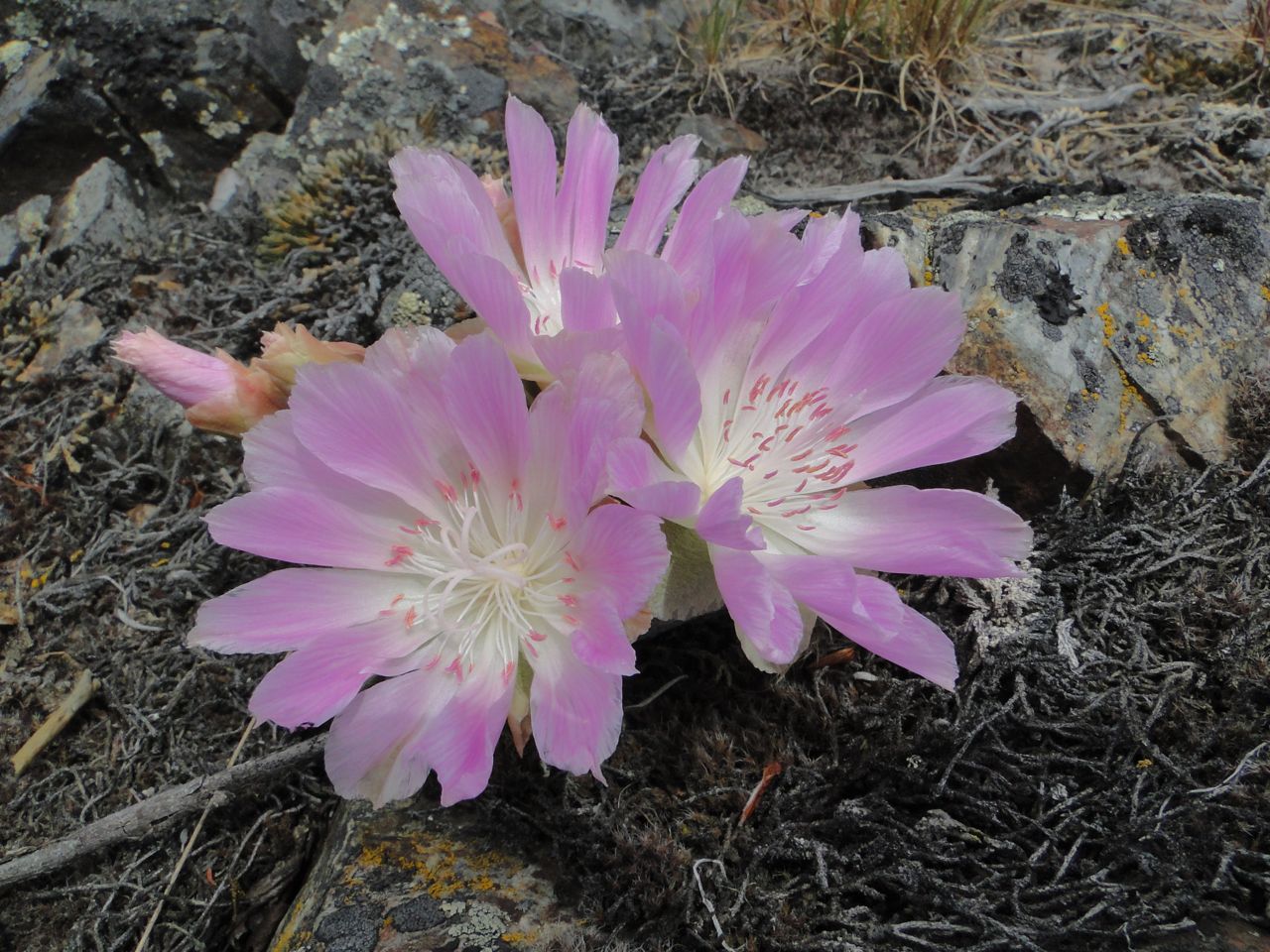
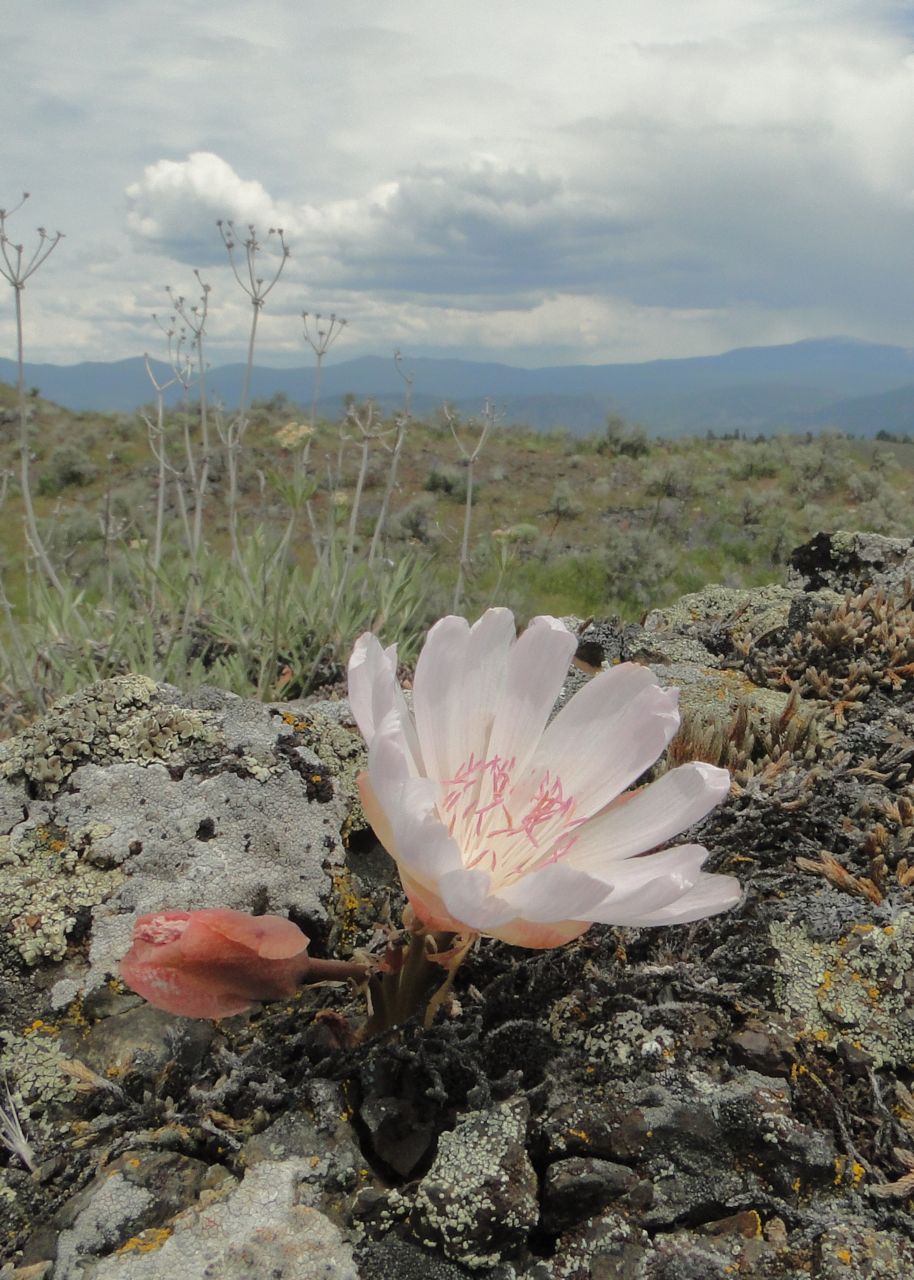
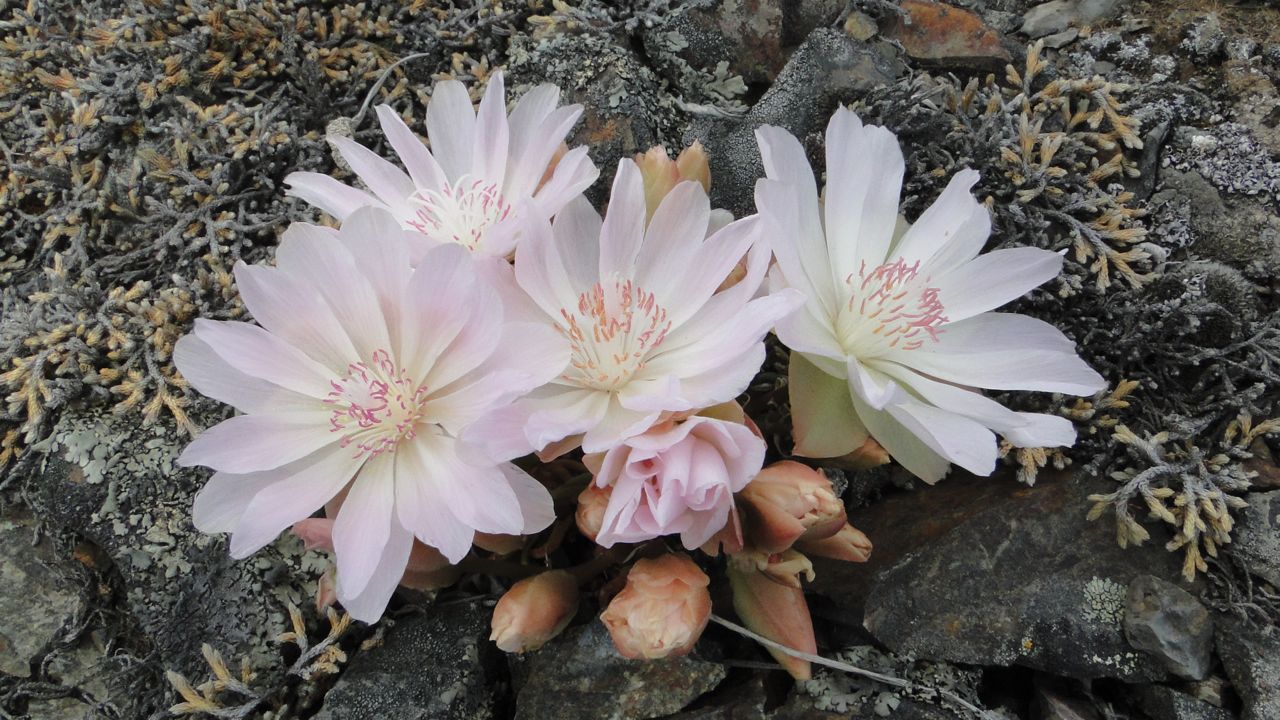
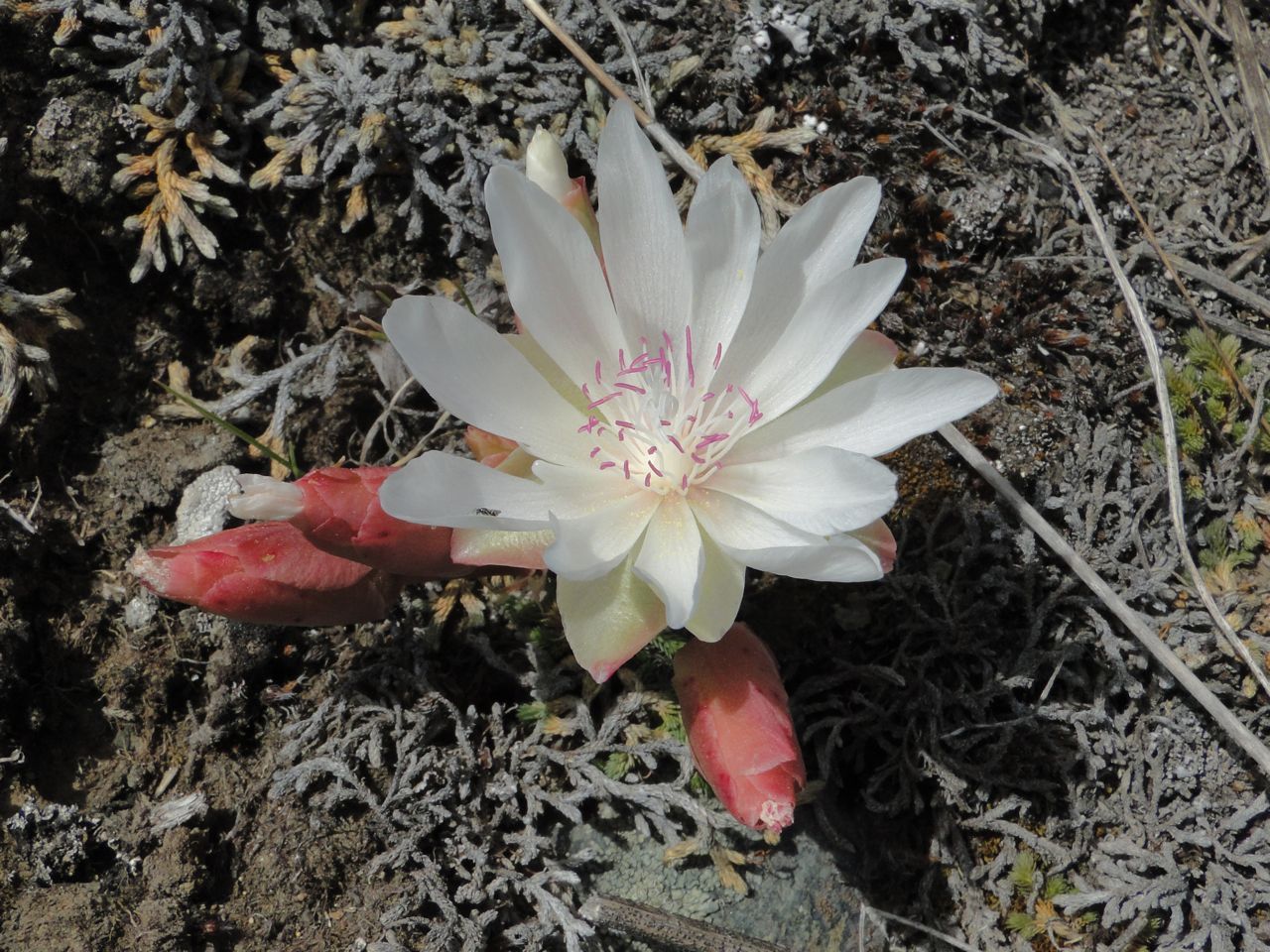
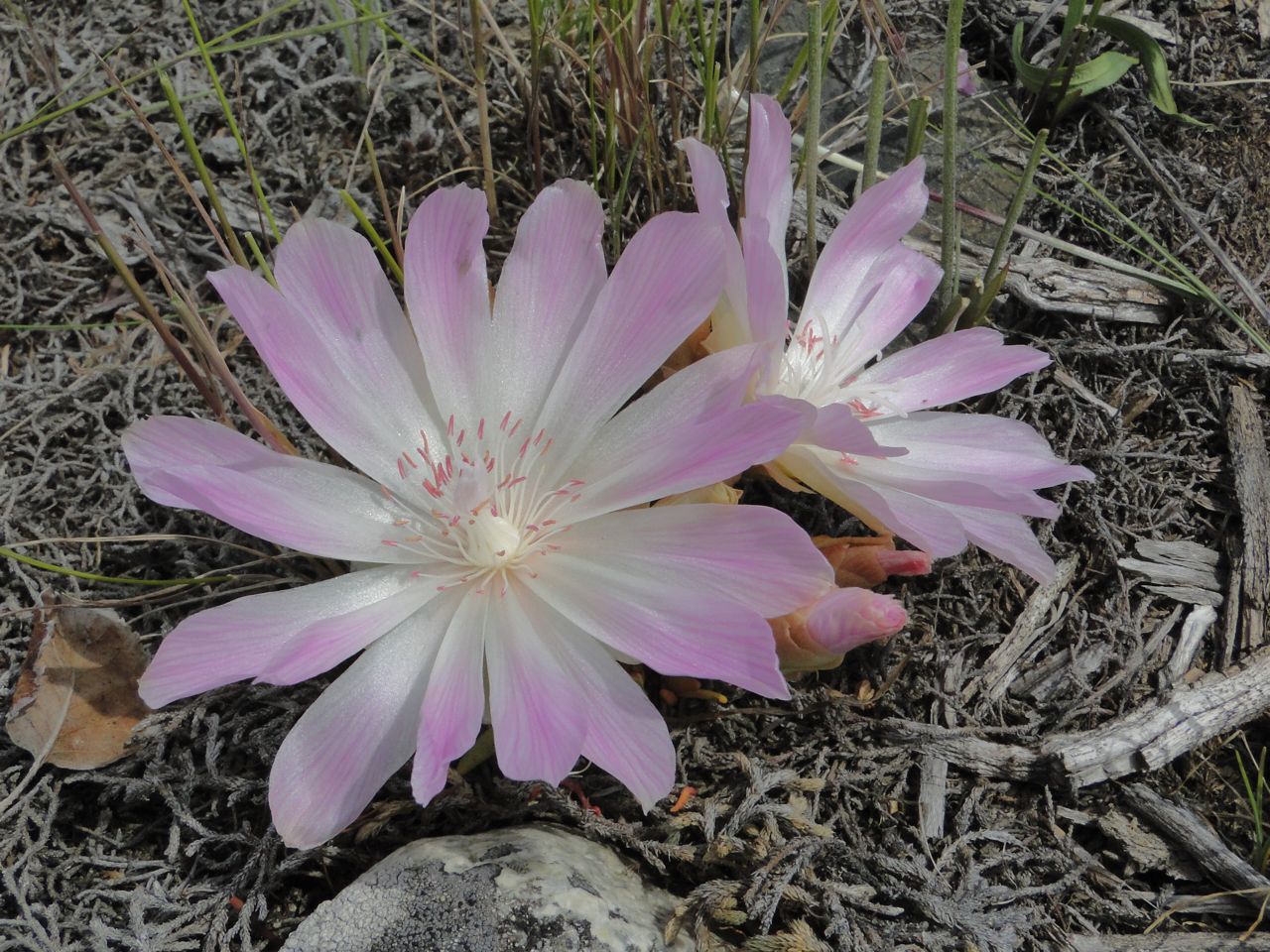
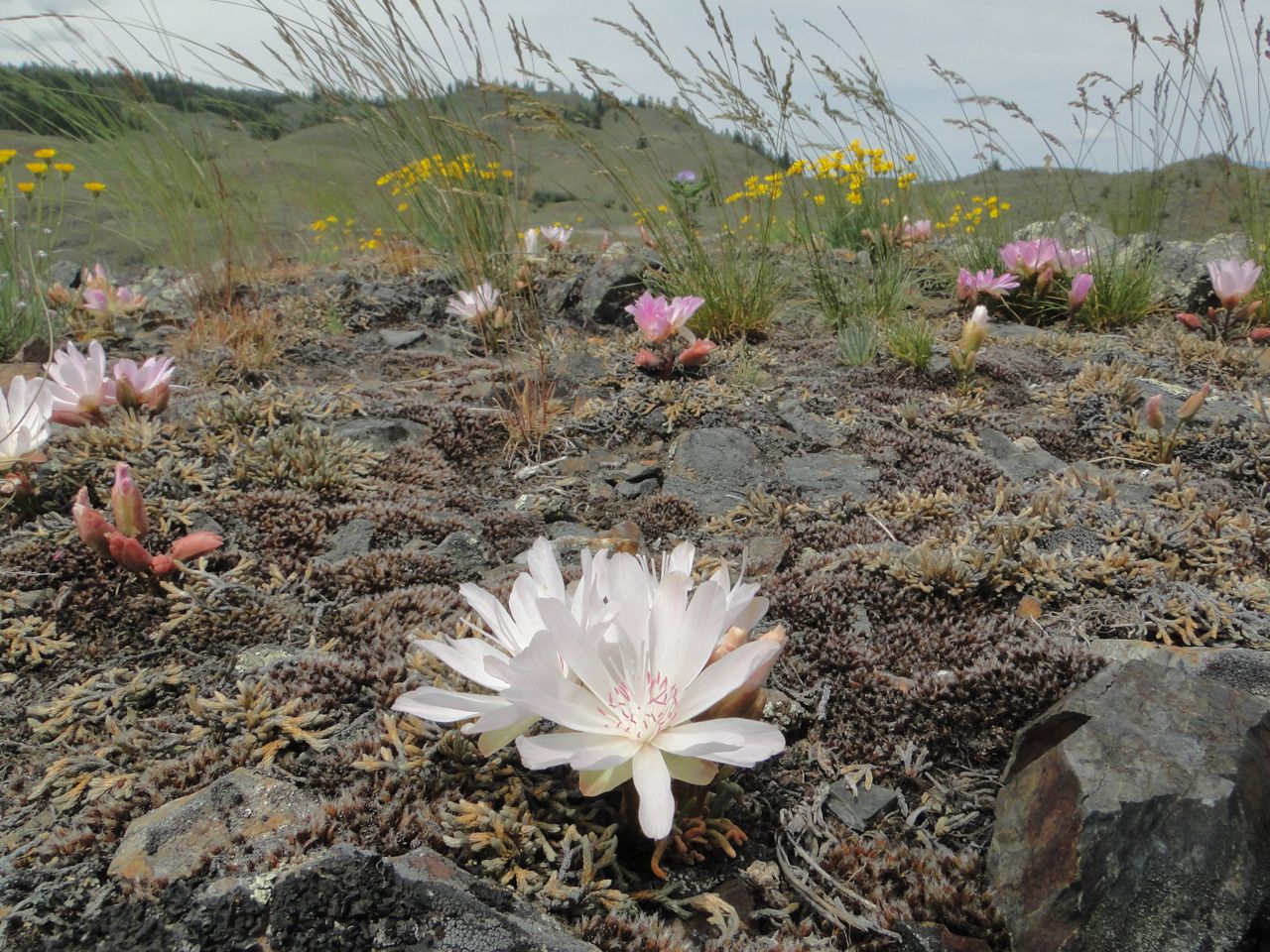
Comments
Lori S. (not verified)
Re: Lewisia rediviva
Thu, 06/09/2011 - 8:00pmWow, what a wonderful sight, David!!
Toole (not verified)
Re: Lewisia rediviva
Fri, 06/10/2011 - 1:44amGee :) Wonderfully captured David.
Thanks for posting.
Cheers Dave.
Peter George
Re: Lewisia rediviva
Fri, 06/10/2011 - 8:21amAbsolutely gorgeous. You've stimulated my desire to actually grow this plant successfully, a task I've taken on repeatedly with little to no success in the past. Now I'm going to try again. It's simply too beautiful a flower to NOT have in my garden.
Sellars (not verified)
Re: Lewisia rediviva
Fri, 06/10/2011 - 8:05pmPeter:
Lewisia rediviva comes quite easily from seed and grows in the garden in our climate as long as it does not get too wet in the summer when it is dormant. It starts growing with cooler weather and rain in the Fall and can take any amount of cold and rain in the winter. A bit like a Frit really.......... except you can see the new leaves all winter.
I have had one in the garden for about 5 years and it flowers reliably every year. It is a very well drained, sunny and dry spot in the garden. I have also tried one in a pot and that seems to work too.
Martin Tversted (not verified)
Re: Lewisia rediviva
Fri, 06/10/2011 - 9:57pmI have one in flower too if I recall correctly from nevada. Huge white flowers.I keep them in a pot and keep them dry from now on until they start growing in the fall.
Worth any effort!
Martin
Cammack (not verified)
Re: Lewisia rediviva
Wed, 06/15/2011 - 11:27amThese Lewisia rediviva are growing in a trough in eastern Oregon. I don't water them and they seem to be doing fine. There are some seedlings in the trough from last years seed.
Richard T. Rodich
Re: Lewisia rediviva
Wed, 06/15/2011 - 3:40pmWow David! Those sure make most excellent trough subjects!
What else do you have planted with them?
Cammack (not verified)
Re: Lewisia rediviva
Wed, 06/15/2011 - 11:24pmThere are only Lewisia rediviva planted in this trough.
Margaret Young
Re: Lewisia rediviva
Thu, 06/16/2011 - 9:20amSuper Lewisia photos, Folks 8)
David S.... we haven't seen you around in the SRGC Forum for quite a while but I've posted a link to this thread here so people can catch up with your pix and the others here. ;)
Maggi Y.
Luc Gilgemyn (not verified)
Re: Lewisia rediviva
Thu, 06/16/2011 - 1:25pmStunning pictures from the wild David ! Truly amazing !
Sellars (not verified)
Re: Lewisia rediviva
Wed, 07/13/2011 - 8:32pmI was fascinated by the description of the life cycle of Lewisia rediviva in Davidson's book on Lewisias.
http://www.amazon.com/Lewisias-B-Leroy-Davidson/dp/0881924474/ref=sr_1_2...
He notes that after the blossom has been fertilized, the withering petals and stamens fold inward to wrap the ovary in a tidy package bound within the six to nine sepals. The seed takes only a short time to ripen and then the plant's real genius emerges. The stalk disengages and the papery calyx and its enclosed capsule cartwheel away in the wind. During the journey the capsule splits revealing the shiny black disc-shaped seeds which adhere in a little clutch for a while. Their release completes the bitteroot's life story.
The seeds on the Lewisia rediviva in our garden disappear very quickly and they are thus hard to observe and collect. This year one flowered in the Alpine Shed and I carefully kept the seed capsules from blowing away. The first picture below is the wrapped ovary and the papery calyx as described by Davidson. The second photo shows the split seed capsule. It must be a real challenge to collect wild seed. I was lucky enough to get wild seed from Ron Ratko.
Fermi de Sousa
Re: Lewisia rediviva
Mon, 08/01/2011 - 12:26amThis is a species I must try again. Thanks for sharing your pics and your experience, David.
cheers
fermi
Anne Spiegel
Re: Lewisia rediviva
Mon, 08/01/2011 - 5:57amThey are so beautiful, David. I've had mixed success with them in the garden. They'll bloom for a few years and then disappear. I especially like the white ones with the pink stamens. They're so easy from seed, I'll try them again. I usually keep them in the pot the first year and plants them out the second year. Don't know if that's necessary.
Sellars (not verified)
Re: Lewisia rediviva
Fri, 08/26/2011 - 6:58pmTo try and capture the amazing flowers and habitat, I took some video footage of the Lewisia rediviva on our Mount Kobau trip and have posted it on YouTube:
http://www.youtube.com/user/MountainFlora?feature=mhee#p/a/u/0/X8Zt8Y_6iLA
I included a music track from Pierre Fournier's stunning rendition of the Bach suites for solo cello. However, YouTube does a digital match, figures out what the track is and determines the copyright status. If the music is deemed copyright they include ads on the video and presumably compensate the artist in some way. It is easy enough to click off the ads. Unfortunately the copyright requirements are such that the video is blocked in Germany. If anyone in Germany wants to see it, please let me know and I will upload a version without Bach in the background.
Mark McDonough
Re: Lewisia rediviva
Fri, 08/26/2011 - 7:08pmDavid: SUPERB video, and with the music selection, BRILLIANT!!!
On a side note, what software do you use to create such Youtube multimedia presentations?
Sellars (not verified)
Re: Lewisia rediviva
Fri, 08/26/2011 - 7:28pmThanks Mark for your kind comments.
I am a long time Mac user so just use the software that comes with Mac.
iMovie integrates well with iPhoto and iTunes so it is quite easy to put it all together. I like the version of iMovie known as iMovieHD which dates from about 2006. Subsequent editions of iMovie lost important functionality so I stuck with the old version. I understand the very latest iMovie has restored the functions I need but I have not tried it yet as I am used to the old version.
Once you have completed the editing and added the sound track you convert the movie to Quicktime which can then be uploaded to YouTube. I fail to understand how YouTube can provide all that storage space for free.
Cliff Booker
Re: Lewisia rediviva
Sat, 08/27/2011 - 12:07amDavid,
May I congratulate you on your beautiful videos which, I'm ashamed to admit, I have only just discovered.
Your hikes and flower portraits are stunning and deserve a much wider audience.
I was particularly taken with the Skyline Divide/Chowder Ridge hike (http://www.youtube.com/watch?v=WRUVQ1yOAAs&feature=related)
... what month was this hike completed please?
There has been some discussion on the AGS site recently about the need for video/television exploration to be made in the florally rich mountains of the world (in much the same way that the world's fauna has been rigorously explored) and these lovely examples simply emphasise this desire.
Sellars (not verified)
Re: Lewisia rediviva
Sat, 08/27/2011 - 7:00amCliff:
Timing for the Skyline Divide Hike is very much dependent on the snow conditions. We usually go every year around mid-August - it is something of a pilgrimage for us. However this year there is still quite a bit of snow on the ridge according to reports from the Mt Baker National Forest. The info is near the bottom of this table:
http://www.fs.usda.gov/wps/portal/fsinternet/!ut/p/c5/04_SB8K8xLLM9MSSzPy8xBz9CP0os3gDfxMDT8MwRydLA1cj72DTUE8TAwgAykeaxRtBeY4WBv4eHmF-YT4GMHn8usNB9uHXDzYBB3A00PfzyM9N1S_IjTDIMnFUBADW0rdA/dl3/d3/L2dJQSEvUUt3QS9ZQnZ3LzZfMjAwMDAwMDBBODBPSEhWTjJNMDAwMDAwMDA!/?navtype=BROWSEBYSUBJECT&cid=stelprdb5150431&navid=091000000000000&pnavid=null&ss=110605&position=Not%20Yet%20Determined.Html&ttype=detail&pname=Mt.%20Baker-Snoqualmie%20National%20Forest-%20Home
We may go up there this year in September!
Sellars (not verified)
Re: Lewisia rediviva
Sat, 08/27/2011 - 7:06amCliff:
I agree with you. It always bugs me when there is a TV program on the natural history of wherever and the entire program is only on the fauna. If there is any flora covered it is nothing more than a backdrop with no information on plant names or plant habitat.
Anne Spiegel
Re: Lewisia rediviva
Sat, 08/27/2011 - 9:45amDavid, you mentioned Mt. Baker National Forest. One of my favorite hikes is there, I think - Corral Pass. A lovely steep scree with huge mats of Penstemon rupicola and Collomia debilis v larsenii for starters. Just a spectacular spot - have you been there?
deesen (not verified)
Re: Lewisia rediviva
Sat, 08/27/2011 - 11:18amCracking video David, and I liked the music too.
I suppose it's too much to ask if anyone has any pictures of Lewisia magurei in the wild. I suppose also it's too much too ask if anyone has seed to spare!! :-[
Sellars (not verified)
Re: Lewisia rediviva
Sat, 08/27/2011 - 4:52pmAnne: We have not been to Corral Pass. It is in the Snoqualmie Forest area south of Stevens Pass so it is more than a day trip from here. Thanks for the tip. We will check it out.